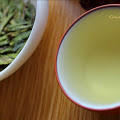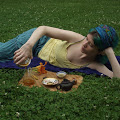We, Brits, love tea and the world seems to know about it. However, it’s also fair to say that we are very conservative in our drinking habits, and it’s quite difficult for many of us to try something new. Even though it may equally good or even better!
At Coffee Tea Club, one of our missions is to push people outside of their comfort zones. We wanted to give our readers examples of great speciality teas from around the world that are worth trying. So we have approached dozens of expert tea bloggers with one very simple question:
If you could only recommend 3 specialty teas to a Brit used to drink traditional English breakfast tea, what would those 3 be and why?
12 amazing people participated. Thank you!
Responses are listed in the order I have received them:
Tony Gebely – World of Tea
 I’d say that a great departure from traditional English tea would be to stay within the black tea category at first:
I’d say that a great departure from traditional English tea would be to stay within the black tea category at first:
- Dian Hong Gongfu
- Qimen Hao Ya
- Any Second Flush Darjeeling
Michelle Rabin – T Ching
 Happy to offer my 2 cents:
Happy to offer my 2 cents:
- Matcha Genmaicha – this green tea is a combination of sencha and bancha tea and also has roasted rice in it and offers an interesting taste for those wanting to give green tea a try. I’ve never had a coffee drinker who didn’t enjoy it.
- I’d suggest some Oolongs to try – again the roasted flavours are especially nice
- White Teas offer a very subtle flavour profile for those afraid of green tea and its bitterness. ultimately, they MUST learn to brew it properly – considering temperature and time of steeping – which as you know makes all the difference in a good cup of tea.
Here’s my formula W + 3T’s = a perfect cup of tea. Good water – and the 3 T’s are good whole leaf tea, correct time and correct temperature. Guaranteed to achieve success. Without this – tea will certainly taste dreadful. All of these are straight up – without anything added. One must learn to give ones pallet a chance to experience something new.
Chris Giddings – Tea-Guy
 It’s unusual for me to express opinions on specific blends. I usually try just to communicate what I see, smell and taste.
It’s unusual for me to express opinions on specific blends. I usually try just to communicate what I see, smell and taste.
However, I really do like your question and would like to weigh in with an answer.
Based on a traditional English Breakfast blend of teas, actually from several individual black teas and not usually even from just a single estate:
- I would recommend a China Breakfast blend. There are several variants out there in the wild… but they generally combine Indian black teas and a couple prominent Chinese black teas such as Keemun.
- Second, I would recommend an orthodox whole leaf Assam. This would be a single origin, probably single estate tea. These hold the strong body the British love but the nuance a full leaf tea affords.
- Third… recent crops from Kenya have been phenomenal. Full leaf purple teas and wonderful black teas with great flavor and aroma haven’t been a hallmark of Kenya until the past five or six years.
Runners up: Full leaf Malawi teas and Guatamalan teas have impressed me the past twelve months.
Riccardo Olmi – Drury Tea and Coffee
This is a awkward question to be honest as most people who like a good breakfast tea usually do not want to try something new.
If I could introduce a new tea to a Breakfast Tea Drinker it would be something different:
- A White tea like Pai mu tan. A sweet and light tea which is a great evening drink.
- I would introduce and good quality single estate Darjeeling but this throws up the issue that this would only be for a season then they would have to search for a new favourite flavour (but it’s worth it).
- Then maybe a great herbal like Lemon Verbena or Vervain which is again different. Again light with a lemony flavour.
I would introduce these as once you have the ability to drink something other that Breakfast you can try new things and even have a certain drink for different times of the day. The added bonus is enjoying a drink with less caffeine is a plus as helps sleep.
Judith Gill – Tea Lover
 I often see posts telling tea drinkers who want to expand their horizons to jump right into things like puerh. I don’t agree with that. My own experience with tea has been similar to my experience with wine. It’s a journey, your palate changes and your tastes change too. New wine drinkers often can’t appreciate (or even like) a big oaky red, but they might love something sweet like a Moscato.
I often see posts telling tea drinkers who want to expand their horizons to jump right into things like puerh. I don’t agree with that. My own experience with tea has been similar to my experience with wine. It’s a journey, your palate changes and your tastes change too. New wine drinkers often can’t appreciate (or even like) a big oaky red, but they might love something sweet like a Moscato.
I think tea is the same way. So, for a drinker who is used to drinking basic English breakfast types, I would recommend branching out just a little, then a little more. So maybe:
- An Oriental Beauty oolong (Bai Hao). It’s very oxidized like black teas, but very sweet due to the bug bitten quality of the leaf. This was my daughter’s first love when I introduced her to tea.
- A Fujian black tea. Yes, it’s another black tea, but the Chinese blacks have different characteristics than the Indian blacks most Brits are familiar with. The flavour profiles can open up a whole new world.
- A Nepalese 2nd flush golden tipped tea. These tend to be more of the golden sweet potato/malty flavour profile. Still in the neighbourhood of black tea but with some very special oomph from the unique terroir.
Nothing too crazy at first.
Joi Sigers – Crazy Tea Chick
 It’s always fun to talk about one of my favorite subjects – TEA!!!
It’s always fun to talk about one of my favorite subjects – TEA!!!
Let’s see, three of the “Breakfast Friendly” teas I’m most in love with at the moment (in absolutely no particular order) are:
- Firepot Breakfast Tea
- Oregon Breakfast Black Tea from Plum Deluxe
- Darjeeling Spicy Plum Black Tea from Pahadi Tea
Pahadi has a lot of excellent black teas with flavour combinations that THRILL this “Crazy Tea Chick”!
Ricardo Caicedo – My Japanese Green Tea
 Here’s my recommendation:
Here’s my recommendation:
- Genmaicha
Beginners in Japanese often prefer genmaicha, which is a traditional blend of green tea and roasted rice. I’ve encountered very few people that don’t like its taste. For those that are not used to green tea, genmaicha is softer on the palate because it isn’t so vegetal, plus astringency and bitterness are kept to a minimum. The price is low, so it doesn’t hurt to try it.
- Houjicha
Another green tea that doesn’t taste “green”. Houjicha is a roasted green tea, and a lot of people like its aroma and flavour. This tea is also very low on caffeine, so that even children and the elderly can drink it at night with no problem. For people that are into coffee, the roasted aroma of houjicha makes it easier to assimilate this tea.
- Matcha, in the form of a matcha latte.
Let’s face it, a lot of people that drink English Breakfast black tea are adding milk and sugar. With matcha, you can do the same. Add 1 teaspoon (2 grams) of matcha to 250 ml of milk, mix in a blender and add sugar to taste.
Once you get used to the matcha latte you may opt to drinking the matcha straight. It’s easy to get hooked to this powdered green tea.
Oli Fifield – Green Tea Guru
 Ok, my recommendations will try to showcase how wide the spectrum of flavour is within tea. It’s truly quite extraordinary.
Ok, my recommendations will try to showcase how wide the spectrum of flavour is within tea. It’s truly quite extraordinary.
- Firstly I would recommend a premium Black tea, us Brits love our Black tea but are unaware of how delicate and interesting a premium version with no milk can be. I recommend our Mu Shu Yunnan Black, it’s a great all rounder with complex and sweet taste.
- Secondly a great Oolong. Oolongs themselves can be processed in different ways offering different tastes. I recommend a Traditional light roast Tie Guan Yin, light, refreshing with a wonderful honey like sweetness.
- The third is a very special tea for me, a Raw Puerh. We stock the largest selection of this genre of tea within the U.K. Puerh is interesting for many reasons, it can be stored indefinitely, changing flavour and going up in value over time. It’s generally pressed into cakes. It is the oldest form of cultivated tea. I would pick 2013 Misty Peak Ancient Arbor Raw Puerh Cake. Delicate, mineral front end with long peach sweet aftertaste.
I feel that premium tea is an avenue of taste exploration that has been left pretty much unchartered in this country.
Lu Ann Pannunzio – The Cup of Life Blog
 For those who usually indulge in English Breakfast (that was totally my case once before, too) I would recommend quite a few teas, but these three are the ones I have narrowed down:
For those who usually indulge in English Breakfast (that was totally my case once before, too) I would recommend quite a few teas, but these three are the ones I have narrowed down:
- Second Flush Darjeeling: The second flush allows for a darker, and stronger flavour in contrast to a first flush Darjeeling. The unique muscatel flavour may be easily enjoyed by Brits who typically like a bolder cup, too.
- Golden Monkey: A complex black tea that has pleasant dried fruit and cocoa tones. It’s a real treat for black tea lovers.
- I would also actually recommend Matcha, too. But not just any matcha, there are many brands out there that may be trying to sell consumers culinary grade with a ceremonial label and price. I used to not be a huge matcha fan and normally wouldn’t recommend it because I never enjoyed the taste, now though, it’s why I love it. I learned the hard way, the taste I didn’t like was because of the quality of the matcha I was drinking. Higher grades of matcha green tea actually contain no notes of bitterness or harshness.
Two black teas, one green.
Amanda Wilson – My Thoughts Are Like Butterflies
 This was quite the challenge and took quite a bit of mulling over before I found three that I thought were suitable.
This was quite the challenge and took quite a bit of mulling over before I found three that I thought were suitable.
- The first one I feel really calls to those who love a classic black tea but want to either broaden their spectrum or want something a little less brisk and more sweet, find a classic Dian Hong. From Yunnan, this red tea is wonderful no matter how you brew it and has become my favorite tea to wake up with.It is approachable and usually quite beautiful, covered in golden fuzz called trichomes.
- Next up I would say give a dark tea a try, I had a wonderful Heicha from Hunan that was blended with roses and compressed into the shape of a heart. It maintained some of the more classic earthy notes you get from dark teas (especially Shou Puerh) but was more mellow and malty reminding me more of a black tea.
- Lastly find a good roasted Oolong, Shui Xian Yancha is fantastic and very intense, if you find one that is recent it usually has a strong smoky presence and an aged one is sweeter and earthier. This is a tea that can either wake you up in the morning or keep you company on a cold day with a good book, it is very comforting while not being mild.
Nicole Martin – Tea For Me Please
 Some general recommendations:
Some general recommendations:
- Assam – Grown in the south of India, most Brits will be familiar with its taste because it is the base for most breakfast type blends. Although they do produce a lot of tea that destined for tea bags, there are some estates that are working to make really fine teas as well. Halmari Estate is one of my favorites.
- Da Hong Pao – Oolongs are known for their floral aromas but those from the Wuyi Mountains of China have a bolder, roasted character. For those used to black tea they can be a great stepping stone.
- Zheng Shan Xiao Zhong – Winston Churchill was known for his love of Lapsang Souchong. This Chinese black tea is the original version. It’s smoky character is a bit more subtle. It’s often compared to whiskey for that reason.
Jen Piccotti – International Tea Moment
 Assam from @JosephWesleyTea because it’s bold and smooth
Assam from @JosephWesleyTea because it’s bold and smooth- Irish Breakfast Tea from @CA_tea because it’s rich





A really fresh, full bodied, brisk and new flavoured write up. I really enjoyed reading it. Though most of the recommendations were from China but Assam has some of the incredible and best small batch crafted Black, Green and White Teas in the world. It just need more depth in research.
Tea is a common drink around the world except in america. The tea in India especially the second flush of assam is the best and creams down.the Darjeeling and nilgiris tea (south India)is flavoured .the tea especially orthodox (a type of manufacture) will mature as time goes by like whisky matures so drinking tea is an art
Very interesting post! I wish I could try all of them!
Hi Nicole,
Assam is a state in the north east of India. not the South.
It is just amazing the different types of teas that you can get from all over the world. I really like new flavors so this is an awesome article for me.
It is amazing and wonderful to visit your site. Thanks for sharing this information, this is useful to me.